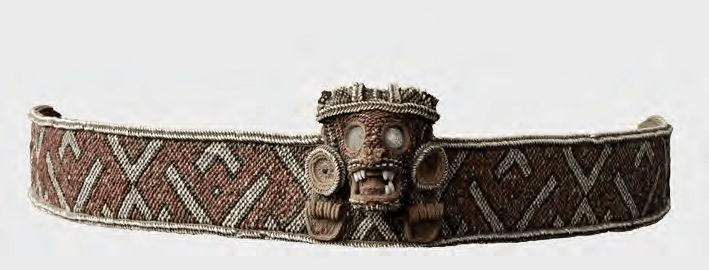Although written in the 1760s and often unclear with some of the sources for its claims, Luis Joseph Peguero's Historia de la conquista de la isla española de Santo Domingo contains some useful allusions to the history of Xaragua. While he seems to largely rely on Las Casas, Oviedo and Herrera, some of the references to Xaragua appear to be unique in Peguero's work. Keeping in mind that he incorrectly identified Anacaona as a wife of the ruler of Xaragua (and misrepresented her as a sister of Caonabo), Peguero's work is nonetheless worth a second look for those interested in Xaragua.
First, Peguero identified items besides cotton and casabe as tribute of Xaragua to the Spanish. For instance, salt and brazil wood were also identified as items of value by the Spanish. In addition, one finds specific caciques named who ruled areas where salt and brazil wood were plentiful. For the former, a cacique named Guanaconel, in the area of Neyba, allegedly ruled a domain which included a salt mine. For brazil wood, a cacique identified as Mateguana, ruled somewhere in the Banda del Sur (presumably located near the future settlement of Yaquimo?). Cabo de Tiburon and the principal lake of Xaragua also had brazil wood. An additional cacique at the time of Ovand, Aybanes, was said to have ruled the area near this large lake.
Peguero also gives some figures for the vassal caciques of Xaragua and its soldiers. One is undoubtedly inflated, putting the number of warriors at the disposal of Xaragua at 20,000 when he first crossed paths with the Adelantado by the Neyba River. Peguero similarly suggests Xaragua had 32 cacique vassals. It's principal settlement, or capital, allegedly had multiple plazas with trees to provide shade. One is left unsure if the over 80 caciques serving under Anacaona at the time of Ovando's slaughter was perhaps due to Indians from other parts of Hispaniola fleeing to Xaragua beforehand or if this attests to the discrepancies in the Spanish sources.
Last, but certainly not least, Peguero also wrote about Xaragua's fall. Putting the blame for the massacre on Sebastian de Biloria, who falsely accused Anacaona of plotting against Ovando, Peguero suggests Ovando late felt remorse for the brutal killings. Indeed, Anacaona was also said to understand and speak some Spanish and harbor a legitimate desire for baptism. If Peguero's story is reliable, it would appear that Biloria had wanted Anacaona to side with him in a plot against Ovando and the colonial government. Once Ovando fell for Biloria's lie, however, her fate was sealed. Without Roldan as a counterweight to the colonial government (and despite his abuses) and with the treacherous method used by Ovando to eliminate Xaragua's political elite, the most powerful cacicazgo on the island was neutralized as a threat to the colonial system. The fall of Xaragua's capital, unsurprisingly, was followed by the defeat of Haniguayagua and La Guababa. The seed of Xaragua later arose to threaten the colonial regime for several years in the revolt of a cacique, Enriquillo, whose movement centered in the Bahoruco contributed to the depopulation of Yaquimo and Salvatierra de la Sabana. Indeed, Enriquillo, whose wife, Mensia Bauruco, was the said to have been the daughter of a cacique named Baurucos. Enriquillo was said to have under his command 6 captains with 70 warriors each, plus Tamayo.
Of course, Peguero also wrote about each of the other cacicazgos and their dissolution. Some general comments on the "Taino" can also be found. Echoing chroniclers like Las Casas, we learn of the Taino penchant for trade and exchange (as well as the use of eggs, corn and supposedly cacao in buying and selling). The Taino calendar system, apparently lunar and beginning the year in spring, was also discussed. The stars, believed to be deceased Indians and bright stars former caciques, snippets of Taino cosmology are revealed in a way that is somewhat more respectful than the condescending remarks that focus on Taino idolatry and superstition.

No comments:
Post a Comment